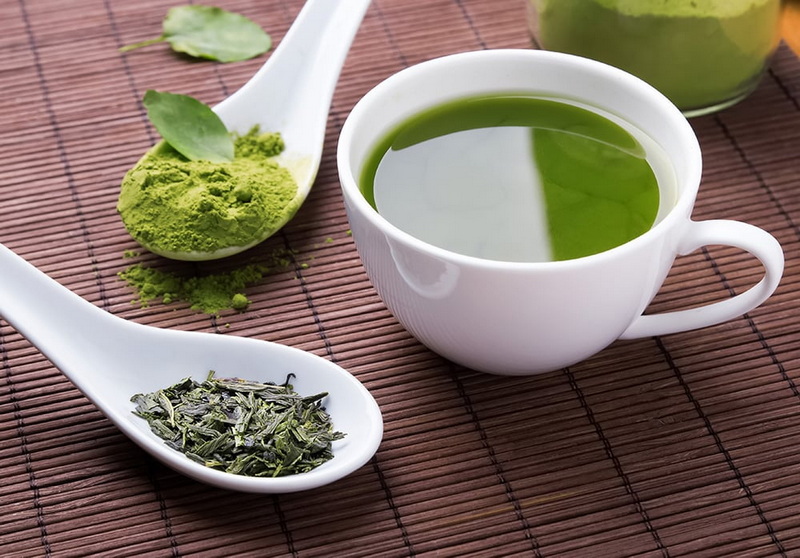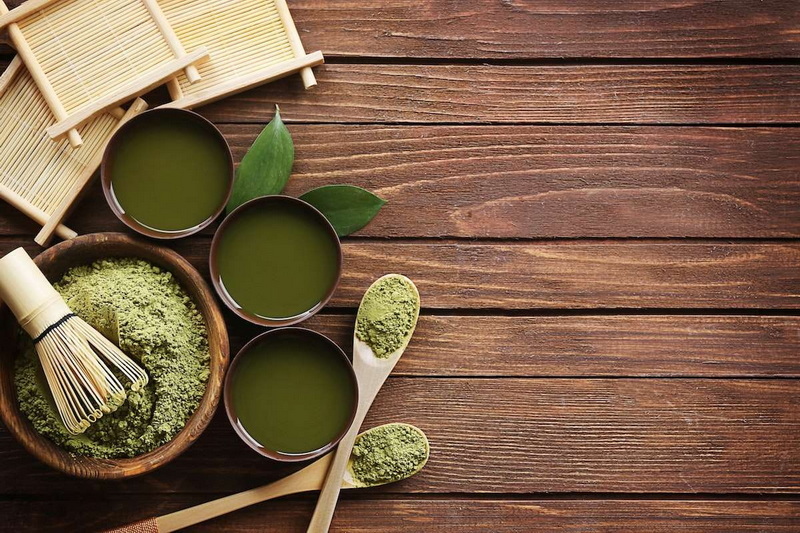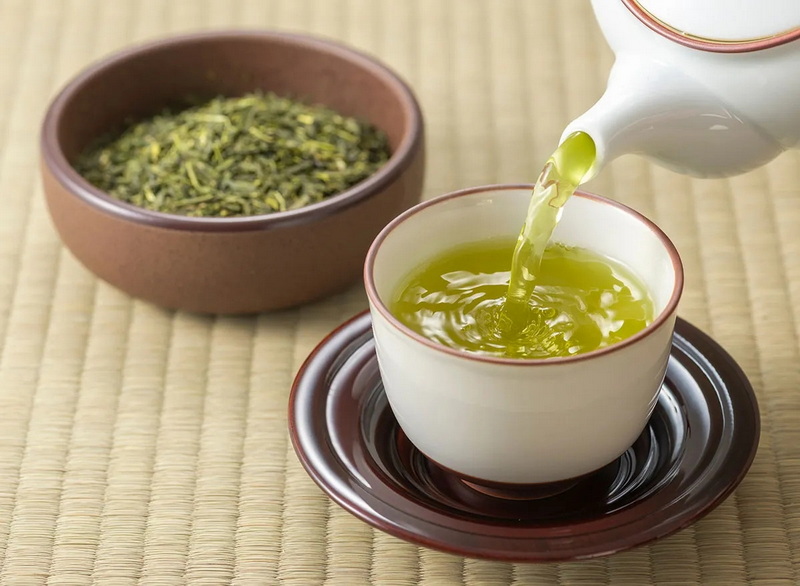Content Menu
● Origins and Processing
● Nutritional Composition
● Health Benefits
● Flavor and Preparation
● Culinary Uses
● Visual and Physical Differences
● Exploring Green Tea Varieties
● Matcha Grades and Quality
● Potential Side Effects
● Key Differences Summarized
● Conclusion
● FAQ
>> 1. What are the main differences between green tea and matcha?
>> 2. Which tea has more antioxidants, green tea or matcha?
>> 3. How do the flavor profiles of green tea and matcha compare?
>> 4. What are the primary health benefits of drinking matcha?
>> 5. Can matcha replace green tea in terms of health benefits?
● Citations:
Green tea and matcha, both derived from the Camellia sinensis plant, are celebrated for their distinct flavors, preparation methods, and health benefits. While both offer unique advantages, understanding their differences is key to appreciating their individual qualities. This article explores the nuances between green tea extract and matcha, covering their origins, nutritional profiles, health benefits, and culinary uses.

Origins and Processing
Green Tea: Green tea is made from the leaves of the Camellia sinensis plant. To prevent oxidation, the harvested leaves are quickly heated through steaming, pan-firing, or sun-drying. The processing methods vary depending on the type of green tea. This variety in processing leads to a wide spectrum of flavors, from the delicate sweetness of Gyokuro to the robust astringency of Sencha. Each method preserves different compounds within the leaf, contributing to its unique character and health benefits.
Matcha: Matcha undergoes a more meticulous cultivation and extraction process. It is grown in the shade for approximately three weeks before harvest, which boosts chlorophyll levels and gives it a vibrant green color. Shading also increases the levels of beneficial compounds like theanine, caffeine, and catechins. This careful cultivation is what sets matcha apart, ensuring a richer nutrient profile. After harvesting, the leaves are steamed, dried, and then ground into a fine powder using traditional stone mills. This slow, deliberate grinding process prevents the tea from overheating and preserves its delicate flavors and nutrients.
Nutritional Composition
Green Tea: Green tea contains polyphenols, including catechins, with approximately 5 calories and 24 to 45 milligrams of caffeine per mug. The specific nutritional content can vary based on the type of green tea and how it is brewed. The catechins in green tea, particularly EGCG (epigallocatechin gallate), are powerful antioxidants that contribute to its many health benefits. However, the brewing process only extracts a portion of these beneficial compounds.
Matcha: Matcha is nutritionally superior to green tea because the entire leaf is consumed. It is rich in antioxidants, particularly EGCg, and contains L-theanine, which promotes relaxation. Matcha has a low caloric value, making it a good choice for weight management. Studies show that matcha contains more than double the vitamin C found in brewed green teas. The fine powder allows for complete absorption of all the nutrients, making it a more potent source of antioxidants and other beneficial compounds.
The following table compares the nutrient levels in matcha and green tea:
| Nutrient | Matcha (per serving) | Green Tea (per serving) |
| Antioxidants | 134 milligrams | 63 milligrams |
| Tannins | 99 milligrams | 7 milligrams |
| Amino Acids | 45 milligrams | 3 milligrams |
Health Benefits
Green Tea: Green tea extracts slow the aging process by enhancing the body's immunity to free radicals. Regular consumption supports overall health and wellness. Research indicates that green tea can help improve cardiovascular health, reduce the risk of certain cancers, and enhance cognitive function. The catechins in green tea act as scavengers, neutralizing harmful free radicals that contribute to cell damage and aging.
Matcha: Matcha offers similar health benefits as green tea but with greater intensity. It can aid in obesity treatment, boost heart health, and lower blood sugar levels due to its high antioxidant content. Matcha's concentrated nutrients provide more potent health effects. The high concentration of L-theanine in matcha also promotes a state of relaxed alertness, making it a popular choice for those seeking a calm and focused energy boost.
Flavor and Preparation
Green Tea: Green tea has a light, refreshing flavor, often described as grassy, earthy, or vegetal. Flavor profiles can vary, with notes of honey, jasmine, peach, or citrus. These variations depend on the type of green tea and the specific processing methods used. Green tea is prepared by steeping the leaves in hot water at around 180°-185°F for about 3 minutes. The water temperature and steeping time are crucial for extracting the optimal flavor and preventing bitterness.
Matcha: Matcha has a richer, more intense flavor with a unique umami and slight bittersweetness. The umami flavor comes from the high concentration of amino acids, particularly L-theanine. It is often blended with milk and sweeteners to make matcha lattes, balancing the bitterness with sweetness. Matcha is prepared by whisking the powder into hot water. The traditional method involves using a bamboo whisk (chasen) to create a frothy texture, enhancing the overall experience.
Culinary Uses
Green Tea: Green tea is primarily consumed as a beverage. It can also be used in some culinary applications to impart a subtle tea flavor. Green tea extracts are sometimes used in desserts or sauces to add a unique flavor profile.
Matcha: Matcha is versatile in the kitchen. It is used in lattes, smoothies, baked goods, and desserts, providing both flavor and a vibrant green color. From matcha ice cream to matcha cookies, the possibilities are endless. The fine powder blends easily into various recipes, adding a distinctive flavor and a boost of antioxidants.
Visual and Physical Differences
Green Tea Extract: Green tea extract typically has a light greenish color. The extract is often used in supplements and skincare products due to its antioxidant properties.
Matcha: Matcha has a thicker green color due to the high chlorophyll levels. Its fine powder form allows for complete consumption of the tea leaf. The vibrant green color is a visual indicator of its high nutrient content and the careful cultivation process.

Exploring Green Tea Varieties
The world of green tea is diverse, with each variety offering unique characteristics and flavor profiles. Here are some notable examples:
- Sencha: One of the most popular types of green tea in Japan, Sencha is known for its balanced flavor, combining a refreshing astringency with a subtle sweetness. It is typically steamed and dried, resulting in a bright green color.
- Gyokuro: Considered one of the highest quality green teas, Gyokuro is shaded for several weeks before harvest, resulting in a sweeter, more mellow flavor with a hint of umami.
- Genmaicha: A unique blend of green tea and roasted rice, Genmaicha offers a nutty, toasty flavor that complements the grassy notes of the tea.
- Hojicha: Roasted green tea, Hojicha has a reddish-brown color and a distinctively smoky flavor. It is lower in caffeine compared to other green teas, making it a good choice for evening consumption.
- Kukicha: Made from the stems and twigs of the tea plant, Kukicha has a mild, slightly sweet flavor and is naturally low in caffeine.
Matcha Grades and Quality
The quality of matcha can vary significantly depending on factors such as the grade of the tea leaves, the grinding process, and the storage conditions. Here are some common matcha grades:
- Ceremonial Grade: The highest quality matcha, reserved for traditional tea ceremonies. It has a vibrant green color, a smooth texture, and a delicate, slightly sweet flavor.
- Premium Grade: Excellent for daily consumption, Premium Grade matcha offers a good balance of flavor and affordability. It is suitable for making lattes, smoothies, and other beverages.
- Culinary Grade: Intended for use in cooking and baking, Culinary Grade matcha has a more robust flavor and a slightly coarser texture. It is ideal for adding a distinctive tea flavor to desserts and other dishes.
Potential Side Effects
While both green tea and matcha offer numerous health benefits, it's important to be aware of potential side effects:
- Caffeine Sensitivity: Both green tea and matcha contain caffeine, which can cause anxiety, insomnia, and digestive issues in sensitive individuals.
- Tannins: The tannins in green tea can interfere with iron absorption. Consuming green tea with meals can help mitigate this effect.
- Fluoride: Green tea can contain fluoride, which, in excessive amounts, may lead to skeletal fluorosis. However, this is rare with moderate consumption.
Key Differences Summarized
- Form: Green tea is available in loose leaf or bagged form, while matcha is a fine powder.
- Processing: Green tea is cultivated under the sun, while matcha is shade-grown.
- Consumption: With green tea, the leaves are steeped and discarded; with matcha, the entire leaf is consumed.
- Flavor: Green tea has a light, grassy flavor, while matcha has a richer, umami flavor.
- Nutrients: Matcha generally contains a higher concentration of nutrients and antioxidants compared to green tea.
Conclusion
While green tea and matcha both originate from the Camellia sinensis plant, they differ significantly in cultivation, processing, nutritional content, flavor, and preparation methods. Matcha offers a more concentrated source of nutrients and antioxidants because the entire leaf is consumed, providing more intense health benefits. Green tea, with its light and refreshing flavor, remains a popular and healthful beverage. Choosing between green tea and matcha depends on individual preferences and health goals. Consider your taste preferences, the desired health benefits, and how you plan to incorporate the tea into your daily routine.

FAQ
1. What are the main differences between green tea and matcha?
Matcha is a powder form of green tea where you consume the entire leaf, resulting in a higher concentration of nutrients and a richer flavor. Green tea involves steeping leaves in water, offering a lighter flavor and fewer nutrients per cup.
2. Which tea has more antioxidants, green tea or matcha?
Matcha generally has a higher concentration of antioxidants compared to green tea due to the consumption of the entire leaf, especially catechins like EGCg.
3. How do the flavor profiles of green tea and matcha compare?
Green tea has a light, grassy flavor, while matcha has a richer, more intense flavor with umami notes and a slight bitterness.
4. What are the primary health benefits of drinking matcha?
Matcha offers enhanced antioxidant effects, improved heart health, better blood sugar control, and increased energy levels without the crash associated with caffeine, thanks to its L-theanine content.
5. Can matcha replace green tea in terms of health benefits?
Matcha can be a more potent alternative to green tea for health benefits due to its higher concentration of nutrients. However, both are beneficial and can be included in a healthy diet.
Citations:
[1] https://www.youtube.com/watch?v=FFDcgFWqw_c
[2] https://www.medicalnewstoday.com/articles/matcha-vs-green-tea
[3] https://pmc.ncbi.nlm.nih.gov/articles/PMC7231151/
[4] https://www.republicoftea.com/blog/tea-library/matcha-vs-green-tea-what-is-the-difference/tl-036/
[5] https://www.reddit.com/r/tea/comments/16vwr60/difference_between_green_tea_and_matcha/
[6] https://pmc.ncbi.nlm.nih.gov/articles/PMC7796401/
[7] https://www.artoftea.com/blogs/tea-profiles/what-is-the-difference-between-matcha-and-green-tea
[8] https://pmc.ncbi.nlm.nih.gov/articles/PMC11049459/
[9] https://sipspa.com.au/blogs/articles/whats-the-difference-between-matcha-and-green-tea
[10] https://matcha.com/blogs/news/matcha-vs-green-tea-matcha-powder-is-better-heres-why-plus-5-tips






























